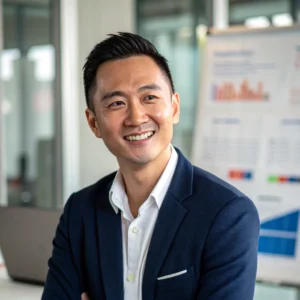When comparing aluminium water bottles to stainless steel water bottles, consider factors like weight, durability, and insulation. Aluminium bottles are lighter, ideal for outdoor activities, while stainless steel bottles are heavier but offer strength. Stainless steel is more durable and has superior corrosion resistance. Insulation varies based on construction and coatings. Stainless steel is better for the environment long-term. Stainless steel is easier to clean and usually BPA-free. Think about your priorities when choosing between aluminium's lightness or stainless steel's durability. Your choice impacts the bottle's performance and lifespan.
Material Composition
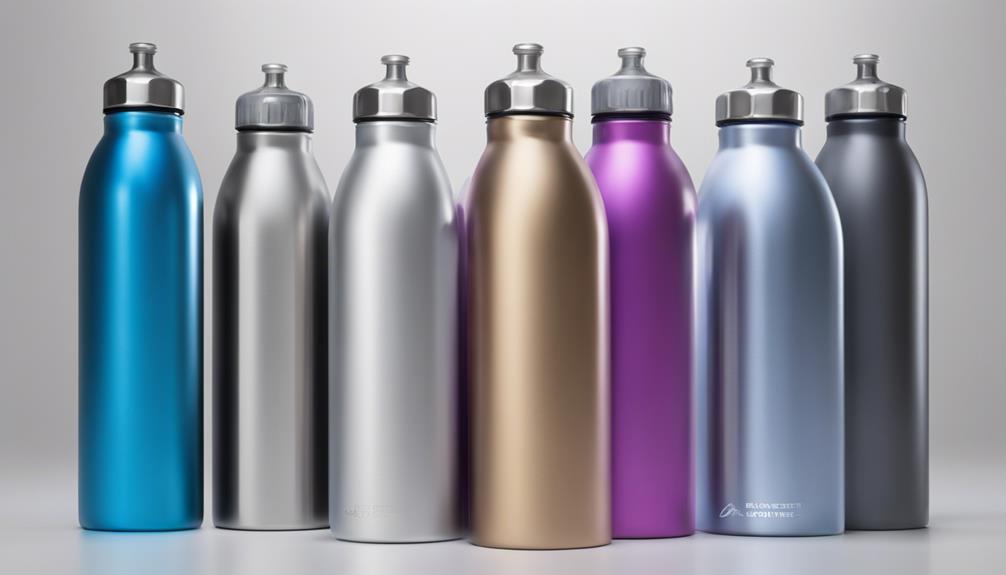
When comparing aluminium and stainless steel water bottles, understanding their material composition is crucial for assessing their durability and performance.
One key difference between the two materials is their weight. Aluminium is significantly lighter than stainless steel, making aluminium water bottles a preferred choice for those looking to reduce the overall weight of their gear. This weight advantage is particularly beneficial for outdoor activities where every ounce matters.
In terms of composition differences, aluminium water bottles are typically made from an alloy that includes elements like copper, magnesium, and manganese. On the other hand, stainless steel water bottles are primarily composed of iron, chromium, nickel, and small amounts of other metals.
This variance in composition not only affects the weight but also influences other properties such as corrosion resistance and heat retention.
Understanding these material composition variances can help you make an informed decision based on your specific needs and preferences when choosing between aluminium and stainless steel water bottles.
Durability and Longevity
When comparing the durability and longevity of aluminium and stainless steel water bottles, it's essential to consider their material strength and corrosion resistance.
The material strength of stainless steel provides excellent durability, making it less prone to dents and deformations compared to aluminium.
Additionally, stainless steel's superior corrosion resistance ensures a longer lifespan, especially when exposed to various environmental conditions.
Material Strength
The durability and longevity of aluminium and stainless steel water bottles differ significantly due to their distinct material properties. When it comes to material strength, stainless steel outperforms aluminium. Stainless steel is known for its high strength and durability, making it less prone to dents and deformation compared to aluminium bottles. This strength comparison is crucial for ensuring your water bottle lasts a long time, especially if you are prone to dropping or bumping it during outdoor activities.
To highlight the differences in material strength between aluminium and stainless steel water bottles, consider the following table:
| Material | Flexibility | Strength |
|---|---|---|
| Aluminium | Low | Moderate |
| Stainless Steel | High | High |
As shown in the table, stainless steel boasts higher strength and flexibility compared to aluminium. This enhanced strength not only contributes to the longevity of the water bottle but also provides better protection against physical damage.
Corrosion Resistance
Corrosion resistance plays a vital role in determining the durability and longevity of both aluminium and stainless steel water bottles. When it comes to preventing rust and ensuring material compatibility, the choice between aluminium and stainless steel can significantly impact the lifespan of your water bottle.
- Material Compatibility: Ensuring the material used is suitable for the liquids stored in the bottle is crucial in preventing corrosion.
- Rust Prevention: Implementing measures to prevent rust formation on the surface of the bottle is essential for its longevity.
- Protective Coatings: Applying specialized coatings can enhance the corrosion resistance of the water bottle.
- Surface Finish: A smooth and well-maintained surface finish can contribute to the corrosion resistance of the bottle.
- Durability Factors: Understanding the factors that contribute to the overall durability of the bottle is essential for making an informed choice between aluminium and stainless steel options.
Weight and Portability

When comparing aluminium and stainless steel water bottles for weight and portability, several key points come into play.
The material composition of each bottle impacts its overall weight, affecting how convenient it is to carry around.
Additionally, the design of the bottle, such as its shape and size, also contributes to its portability factor.
Material Comparison
In terms of weight and portability, aluminum water bottles tend to be lighter than stainless steel options. This difference in weight can make aluminum bottles more convenient for activities like hiking or long walks where carrying a heavy bottle can become a burden.
- Aluminum Water Bottles:
- Lighter in weight compared to stainless steel.
- Ideal for outdoor activities due to their lightweight nature.
- Easy to carry around during travel or daily commutes.
- Less strain on your shoulders and back when carrying for extended periods.
- Fits well in backpack side pockets or cup holders in vehicles.
On the other hand, stainless steel bottles, although heavier, may be preferred by some individuals for their durability and sleek design. If weight and portability are your primary concerns, the lighter aluminum option might be the better choice for your daily hydration needs.
Durability and Design
Considering the implications of weight and portability, the durability and design aspects of aluminum and stainless steel water bottles come into focus for users seeking a balance between functionality and aesthetics. When looking at impact resistance, stainless steel tends to be more durable than aluminum, making it a suitable choice for outdoor activities or environments where the bottle may be subjected to rough handling. On the other hand, aluminum bottles, while lighter, may dent more easily upon impact compared to their stainless steel counterparts.
In terms of customization options, stainless steel bottles often offer a wider range of designs and finishes, allowing users to personalize their bottle to suit their preferences. This aspect adds a layer of individuality to the user experience.
Additionally, ergonomic design plays a crucial role in user comfort and convenience. Stainless steel bottles are often designed with ergonomic features such as curved shapes and easy-to-hold grips, enhancing the overall user experience by making the bottle more comfortable to hold and use on a daily basis.
Insulation Properties
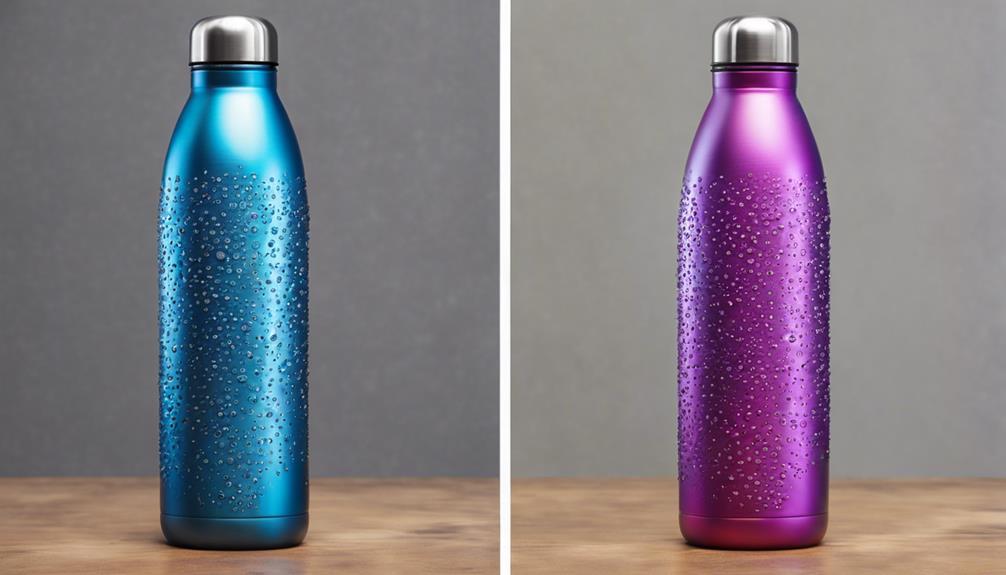
For optimal temperature retention, both aluminium and stainless steel water bottles offer efficient insulation properties. When comparing the insulation efficiency and design between the two materials, certain factors come into play:
- Material Thickness: The thickness of the bottle's walls directly impacts its insulation capabilities. Thicker walls generally provide better temperature retention.
- Double-Walled Construction: Both aluminium and stainless steel bottles commonly feature double-walled construction, creating a vacuum-sealed layer that enhances insulation.
- Powder Coating: Some stainless steel bottles are coated with a powder finish, which not only adds to the bottle's durability but also contributes to better insulation.
- Customization Options: Stainless steel bottles often offer customization options like adding foam layers between the walls, further improving their insulation properties.
- Heat Transfer Rates: Aluminium bottles tend to have higher heat transfer rates than stainless steel, affecting their ability to maintain internal temperatures.
Environmental Impact
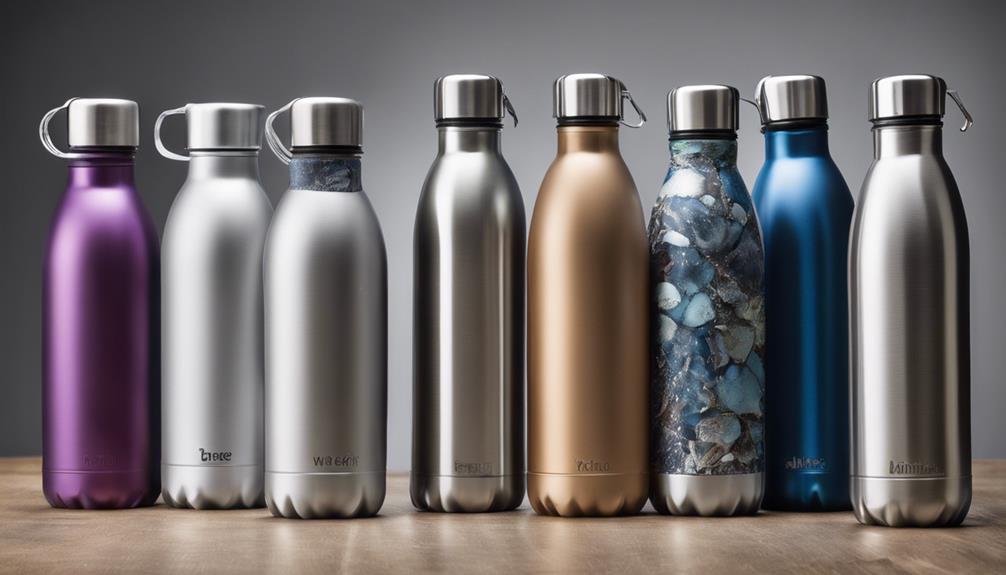
The environmental impact of aluminium and stainless steel water bottles varies significantly based on their production processes and long-term sustainability considerations. When comparing the two materials, aluminium generally has a higher environmental footprint due to the energy-intensive process of extracting bauxite and refining it into aluminium. This results in higher production emissions compared to stainless steel. However, aluminium is highly recyclable, with recycling impact being a key factor in its favor.
Stainless steel, on the other hand, has a lower environmental footprint in terms of production emissions but is less recyclable compared to aluminium. Despite this, stainless steel bottles often have a longer lifespan and are more durable, contributing to their sustainability efforts.
When considering the overall environmental impact, both materials have their strengths and weaknesses. To minimize environmental consequences, choosing a bottle made from recycled aluminium or stainless steel with high recycled content can help reduce the environmental footprint associated with water bottle production.
Corrosion Resistance
Aluminium and stainless steel water bottles exhibit varying degrees of resistance to corrosion under different conditions. When considering corrosion resistance, it's essential to note the following:
- Material Composition: Stainless steel is inherently more corrosion-resistant than aluminium due to its higher chromium content.
- Corrosion Prevention: To prevent corrosion, avoid exposing aluminium bottles to acidic liquids and stainless steel bottles to high-chloride environments.
- Maintenance Tips: Regularly clean both types of bottles with mild soap and water to remove any potential corrosive substances.
- Impact on Taste: Corrosion in water bottles can affect the taste of the water, with stainless steel being less likely to alter the taste compared to aluminium.
- Water Quality: Corrosion can also impact water quality, potentially introducing harmful substances into the water stored in the bottle. Regular maintenance and proper care can help preserve the water quality in both aluminium and stainless steel bottles.
Ease of Cleaning
Cleaning stainless steel water bottles is generally easier than maintaining aluminium ones due to the smoother surface and higher resistance to staining. Stainless steel's non-porous surface makes it less prone to retaining odors or flavors from previous drinks, simplifying the cleaning process. When it comes to hygiene maintenance and sterilization methods, stainless steel provides an advantage due to its ability to withstand higher temperatures without degrading.
| Cleaning Methods | Drying Techniques | Sterilization Methods |
|---|---|---|
| Mild soap and water | Air drying or towel drying | Boiling water or using sterilizing tablets |
| Baking soda paste | Inverted on a rack for complete drying | Dishwasher safe for high-temperature cleaning |
| White vinegar solution | Using a hairdryer on low heat setting | Soaking in a bleach solution for thorough sterilization |
Price Point Comparison

When comparing aluminium and stainless steel water bottles in terms of price, consider factors such as durability and long-term cost-effectiveness. Both materials have their unique advantages and price points that cater to different consumer needs. Here's a breakdown to help you understand the cost efficiency of each:
- Durability: Stainless steel water bottles are generally pricier upfront but offer long-term durability, reducing the need for frequent replacements.
- Brand Reputation: Some brands have established themselves as premium providers of stainless steel bottles, affecting their pricing and consumer perception.
- Market Demand: Aluminium bottles are often priced lower due to lower production costs and higher market demand for this material.
- Consumer Preference: Depending on personal preferences, some may opt for the sleek look of stainless steel, while others may prefer the lightweight nature of aluminium.
- Long-Term Cost-Effectiveness: Although stainless steel bottles may have higher initial costs, their longevity and quality may make them more cost-effective in the long run.
Design and Aesthetics
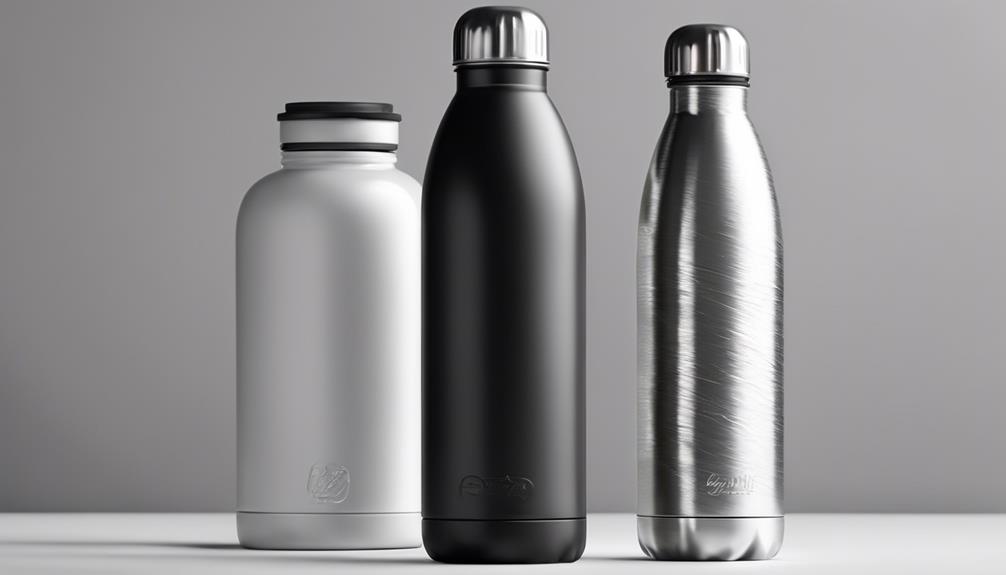
When comparing aluminium and stainless steel water bottles, it's crucial to examine the design and aesthetics.
The material appearance differences between the two types can impact the overall look and feel of the bottle.
Additionally, considering the color and texture variations as well as the shape and size contrast can help you make an informed decision based on your personal preferences.
Material Appearance Differences
Aluminium and stainless steel water bottles exhibit distinct material appearances, contributing to their overall design and aesthetics. When comparing the two materials, several key differences stand out:
- Surface Finishes: Aluminium bottles often feature a smooth, matte finish, while stainless steel bottles can have a polished or brushed finish.
- Branding Options: Aluminium bottles provide a versatile canvas for branding due to their smooth surface, allowing for various printing techniques. Stainless steel bottles offer laser engraving options that create a sleek and permanent branding solution.
- Visual Appeal: The visual aesthetics of aluminium bottles lean towards a modern and lightweight appearance, while stainless steel bottles exude a more classic and durable look.
- Customization Possibilities: Aluminium bottles can be easily customized with colorful coatings and graphics, catering to a more vibrant and expressive design. Stainless steel bottles, on the other hand, offer customization through etching or embossing, providing a sophisticated touch.
These material appearance differences play a significant role in the overall design and aesthetics of aluminium and stainless steel water bottles.
Color and Texture Variations
Color and texture variations in water bottles made from aluminium and stainless steel contribute significantly to their design and aesthetics. When considering color options, aluminium water bottles tend to offer a wider range of choices compared to stainless steel bottles. Aluminium bottles can be found in a multitude of vibrant hues, allowing for more personalized and visually striking designs.
On the other hand, stainless steel bottles typically come in a more limited color palette, often featuring classic shades like silver, black, or white.
In terms of texture variety, stainless steel bottles often have a sleek and smooth finish, providing a modern and sophisticated look. This texture appeals to individuals with design preferences leaning towards a more polished appearance.
In contrast, aluminium bottles can offer a textured or matte finish, adding a unique tactile element to the bottle. These variations in texture can enhance the overall visual appeal of the bottle, catering to those who prefer a more distinct and tactile feel in their water bottle choice.
Shape and Size Contrast
Texture and shape play crucial roles in the design and aesthetics of aluminium and stainless steel water bottles. When comparing the shape of these bottles, you'll notice distinct differences that cater to various preferences. Aluminium bottles often feature sleek, curved designs, while stainless steel bottles tend to have more angular and rigid shapes. Additionally, size differences between the two materials can impact the overall look and feel of the bottle.
- Shape Comparison: Aluminium bottles typically have a more rounded and smooth shape, contrasting with the sharper edges of stainless steel bottles.
- Size Differences: Stainless steel bottles often come in larger sizes compared to aluminium bottles, providing users with more volume options.
- Design Contrast: The design of aluminium bottles tends to focus on simplicity and elegance, while stainless steel bottles may incorporate bold and modern elements.
- Volume Options: Stainless steel bottles offer a wider range of volume capacities, catering to different hydration needs.
- Aesthetics: The choice between aluminium and stainless steel also influences the overall aesthetics of the water bottle, allowing users to select a style that aligns with their personal taste.
Health and Safety Considerations
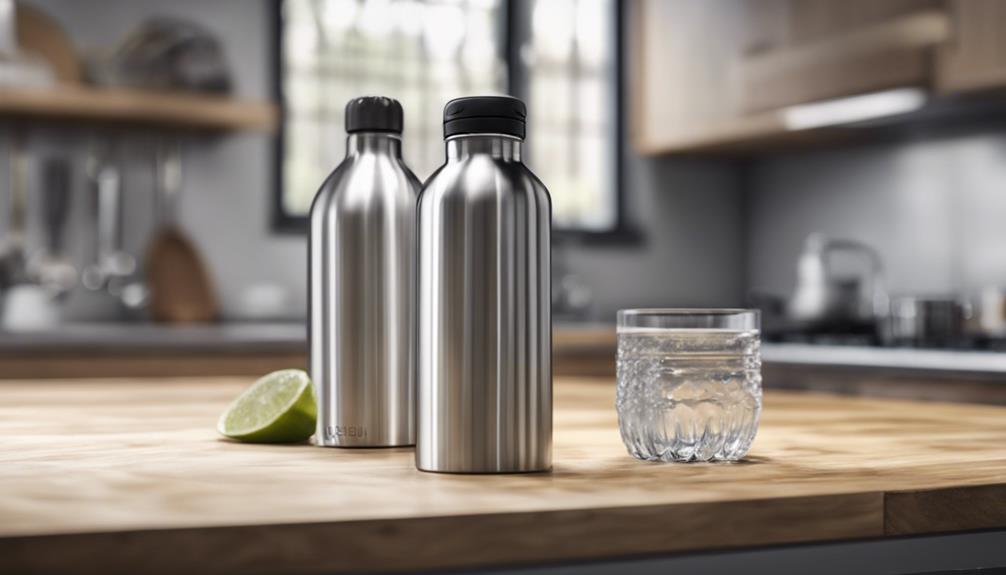
When selecting between aluminium and stainless steel water bottles, it's crucial to consider health and safety factors to make an informed choice.
In terms of health considerations, stainless steel water bottles are generally preferred over aluminium ones due to potential BPA concerns. Aluminium bottles may contain a liner with BPA, a chemical that has been linked to various health issues. Stainless steel bottles are often BPA-free, providing a safer option for storing water.
Regarding safety, both aluminium and stainless steel bottles can be cleaned using mild soap and water. However, stainless steel bottles are typically dishwasher safe, making cleaning more convenient. It's essential to follow health regulations when cleaning water bottles to prevent contamination.
Stainless steel bottles are often recommended for their durability and resistance to corrosion, ensuring that they can be used safely for an extended period. By considering these health and safety factors, you can make a well-informed decision between aluminium and stainless steel water bottles.
Capacity Options
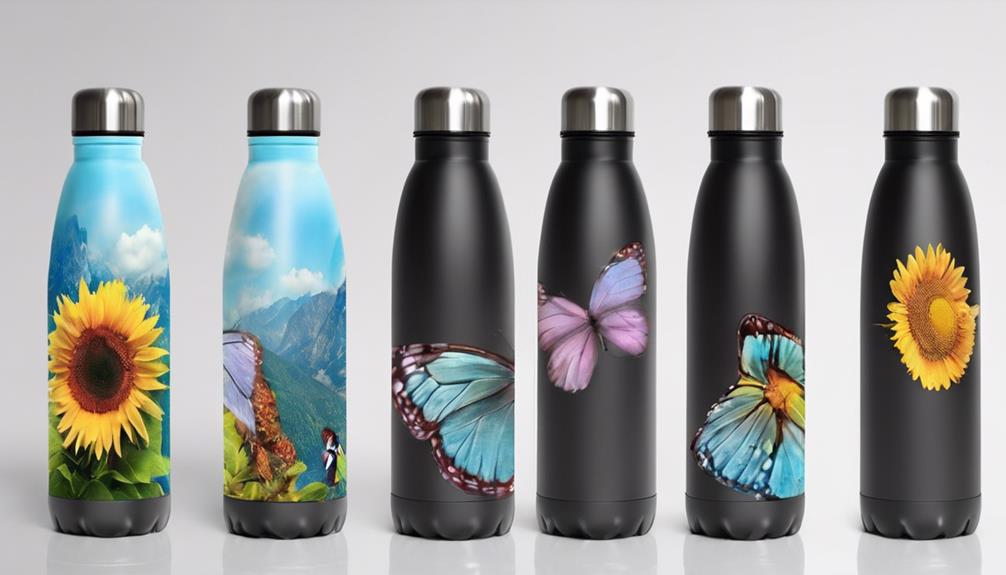
When selecting a water bottle, capacity options play a crucial role in meeting your hydration needs. Size variety allows you to choose the right volume to stay hydrated throughout the day.
Consider the different volume choices available in both aluminium and stainless steel bottles to ensure you have the perfect capacity for your lifestyle.
Size Variety
The water bottles made from both aluminium and stainless steel come in a range of capacity options, allowing you to choose the size that best suits your hydration needs. When considering the size variety of these bottles, here are some key points to keep in mind:
- Customization Options: Some brands offer the ability to customize the size of your water bottle based on your preferences.
- Design Variety: Both aluminium and stainless steel bottles are available in various designs that cater to different size ranges.
- Personalization Choices: You can often personalize your bottle by selecting the capacity that aligns with your daily water intake goals.
- Color Options: Different sizes may come in a variety of colors, providing you with options to match your style or mood.
- Compatibility: Ensure that the size you choose fits your lifestyle, whether you need a compact bottle for on-the-go use or a larger one for extended outdoor activities.
Volume Choices
Various capacity options are available for water bottles made from aluminium and stainless steel. When choosing between the two materials, it's important to consider the volume choices that best suit your hydration needs. Here is a comparison of the capacity options for both aluminium and stainless steel water bottles:
| Capacity (ounces) | Aluminium Water Bottles | Stainless Steel Water Bottles |
|---|---|---|
| 12 | Customization options | Insulation performance |
| 18 | Color choices | Heat retention |
| 24 | ||
| 32 |
The table above illustrates the range of volume choices available for each type of water bottle. Aluminium bottles often offer more customization options in terms of design and color choices, making them a popular choice for those looking to personalize their hydration gear. On the other hand, stainless steel bottles excel in insulation performance and heat retention, ensuring that your beverages stay at the desired temperature for longer periods. Consider these factors when selecting the volume capacity that best fits your lifestyle and preferences.
Brand Availability
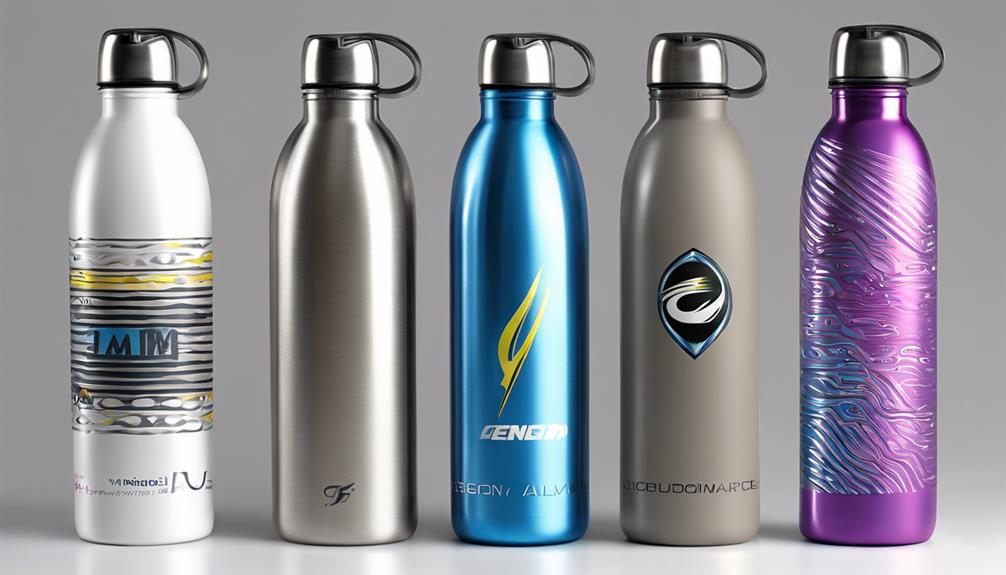
Aluminium and stainless steel water bottles are readily available from a wide range of brands, offering consumers a variety of options to choose from. When considering brand availability, factors such as brand reputation, availability, market demand, and popularity come into play.
Here are some key points to consider:
- Brand Reputation: Some brands are known for their high-quality materials and durable water bottles, providing consumers with a sense of trust and reliability.
- Availability: Certain brands might've a wider distribution network, making their products more accessible in various retail outlets and online stores.
- Market Demand: Popular brands often align with current trends and consumer preferences, reflecting the demand for specific features or designs.
- Popularity: Brands that are well-known and favored by a larger customer base may offer a wider range of options and customization features.
- Variety: Different brands offer unique styles, colors, and sizes, catering to diverse consumer preferences and needs.
Consider these factors when selecting a water bottle brand that aligns with your requirements and preferences.
Special Features and Accessories
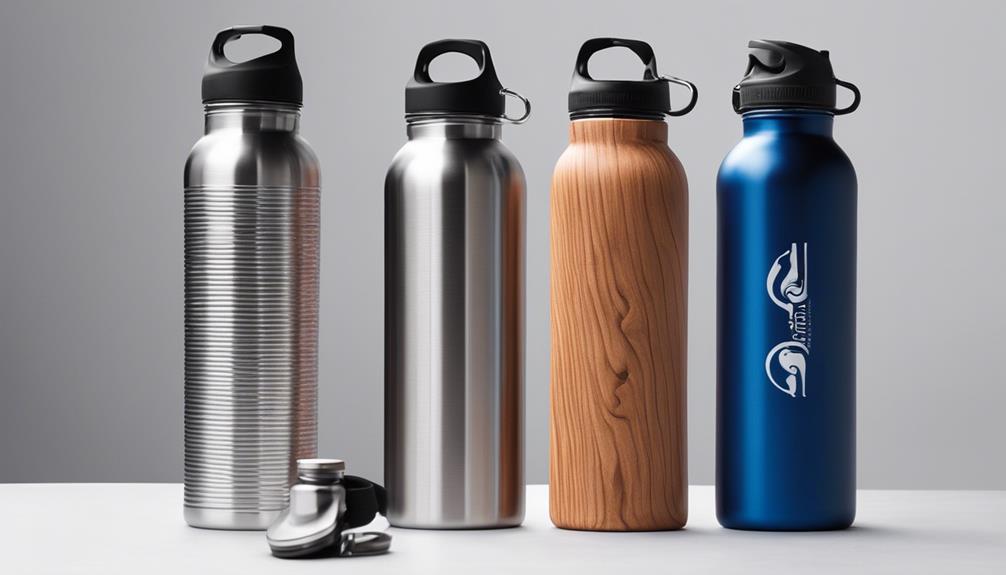
Consider exploring the additional features and accessories offered by different brands of stainless steel and aluminum water bottles to enhance your hydration experience. Stainless steel water bottles often come with the option for custom engraving, allowing you to personalize your bottle or make it a unique gift. Some brands also offer interchangeable lids, providing versatility in how you use your bottle—from sipping to pouring.
On the other hand, aluminum water bottles may offer filter attachments, enabling you to purify water on the go, ideal for outdoor enthusiasts or travelers. Additionally, carrying straps are a common accessory for aluminum bottles, making them convenient to carry during hikes or daily commutes.
When choosing between stainless steel and aluminum water bottles, consider which special features and accessories align with your lifestyle and hydration needs. Whether it's custom engraving, interchangeable lids, filter attachments, or carrying straps, these additional elements can elevate your water bottle experience.
Customer Reviews and Feedback
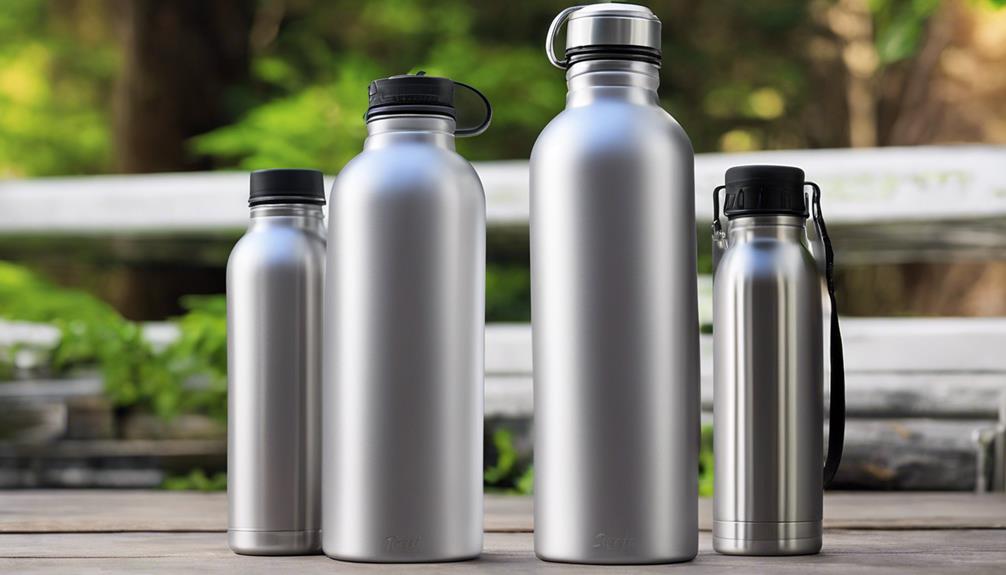
Reviewing customer feedback provides valuable insights into the performance and satisfaction levels of both aluminum and stainless steel water bottles. When analyzing user preferences, it becomes evident that individual tastes vary greatly, with some favoring the lightweight nature of aluminum bottles, while others appreciate the durability of stainless steel options.
Product customization also plays a significant role in customer satisfaction, as those seeking personalized designs may lean towards stainless steel bottles that offer a wider range of design options.
- User Preferences: Customers have differing opinions on the weight and feel of aluminum versus stainless steel bottles.
- Product Customization: Stainless steel bottles tend to offer more options for personalized designs.
- Customer Satisfaction: Overall, both types of bottles have received positive feedback in terms of performance and durability.
- Design Options: Stainless steel bottles often come in a variety of colors and finishes, appealing to a broader range of consumers.
- Feedback Impact: Customer reviews play a crucial role in assisting potential buyers in making informed decisions based on real experiences.
Frequently Asked Questions
Are Aluminium Water Bottles Safe for Hot Beverages?
When considering hot drinks and safety, it's crucial to understand the materials' thermal properties. Aluminum water bottles may not offer the same level of thermal insulation as stainless steel, potentially leading to issues with maintaining hot beverage temperatures.
Can Stainless Steel Bottles Affect the Taste of Water?
Stainless steel bottles are known for their durability, a key selling point. When it comes to water taste perception, only 10% of users report a subtle metallic taste, which may vary based on personal sensitivity.
Do Aluminium Bottles Dent Easily?
Aluminium bottles vary in durability. Some dent easily due to the material's properties. When comparing stainless steel's aesthetics to aluminium's dent resistance, consider both factors. Prioritize material safety and long-term durability for your needs.
Are There Any Health Concerns With Stainless Steel Bottles?
When selecting stainless steel bottles, you may wonder about health concerns. These bottles are generally considered safe, being BPA free. Some may experience a metallic taste initially, but this diminishes with use. They offer durability and are dishwasher safe.
Can Aluminium or Stainless Steel Bottles Be Used for Carbonated Drinks?
When using aluminium or stainless steel bottles for carbonated drinks, remember that cleaning methods are crucial to prevent flavor retention. Stainless steel offers better insulation properties, maintaining beverage temperature longer. Consider these factors for an optimal drinking experience.
Conclusion
In conclusion, when considering whether to choose an aluminium water bottle or a stainless steel water bottle, remember the old saying 'you get what you pay for.'
Both materials have their own strengths and weaknesses, so it ultimately comes down to your personal preferences and needs.
Consider factors such as durability, weight, insulation, and environmental impact before making your decision.
Happy hydrating!

